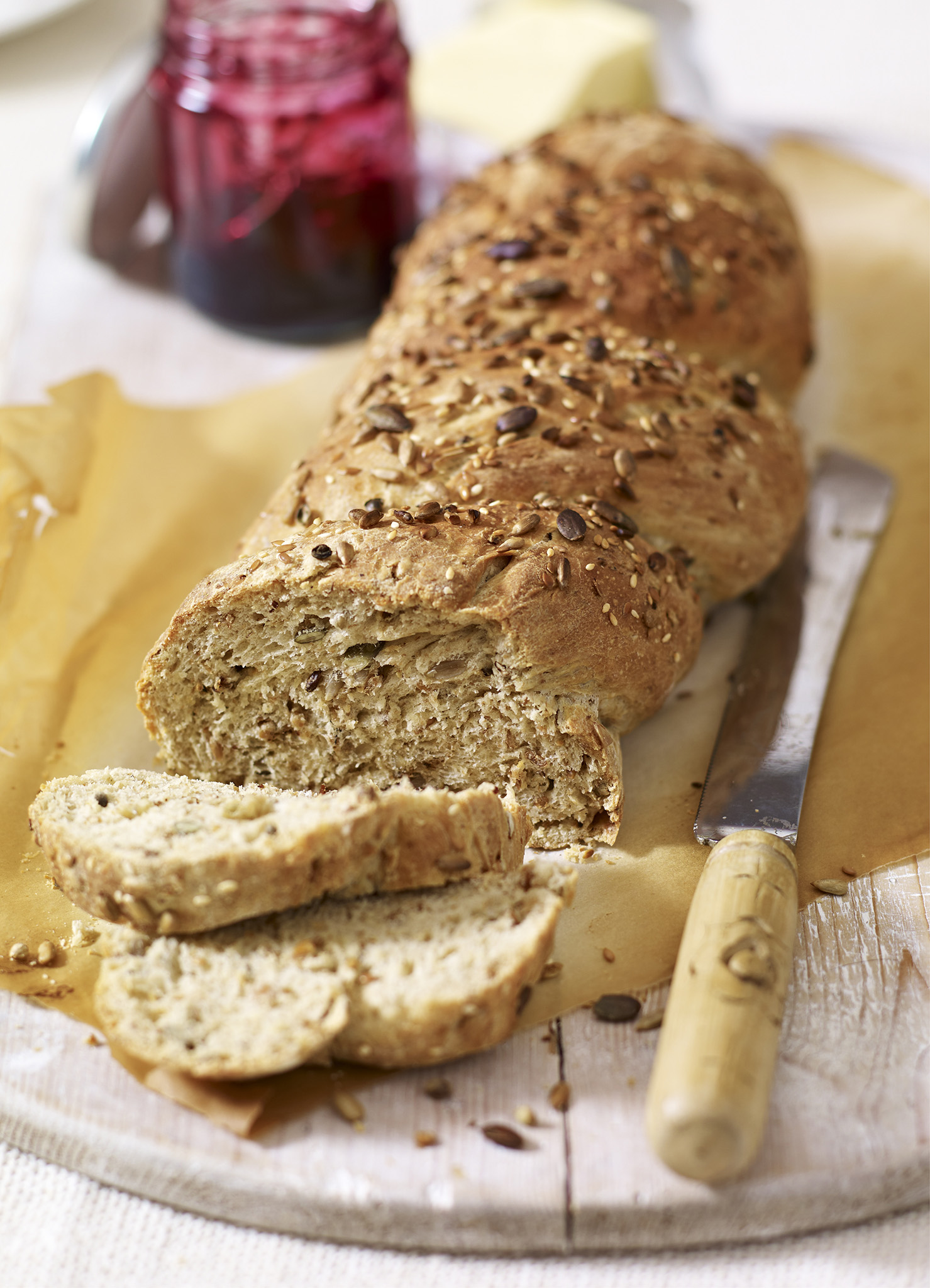
I’ve learned from Paul Hollywood that when making bread it’s good to have a slightly wet, sticky dough, as it produces better results. This loaf contains a mix of seeds for added texture and flavor.
Makes 1 loaf
2 cups (300 g) whole grain flour
3⁄4 cup (200 g) bread flour, plus extra for dusting
11⁄2 tsp salt
7g packet easy-blend (fast-action) dried yeast
2 tbsp (30 g) butter (room temperature), cut into small pieces
6 tbsp mixed seeds, such as sesame, sunflower, flaxseed, and pumpkin
sunflower oil, for greasing
1. Mix both the flours, salt, and yeast together in a large bowl. Add the butter and rub it in with your fingertips. Stir in 5 tablespoons of the seeds. Make a well in the center of the flour mixture and pour in 11⁄4 cups (300 ml) hand-warm water. Mix everything together to make a dough. Gather the dough into a ball. (See Make a soft, pliable dough, step 1.)
2. Turn the dough out onto a lightly floured surface and knead for 8–10 minutes or until smooth and elastic. Put the dough in a large, lightly oiled bowl and cover with plastic wrap. Let rise in a warm place for about 11⁄2 hours or until the dough doubles in size. (See Make a soft, pliable dough, steps 2–4.)
3. Line a large baking sheet with parchment paper. When the dough has risen, gently knead it on the lightly floured work surface 3 or 4 times (no more, as too much handling now will reduce the dough’s lightness).
4. Cut the dough into 2 equal-sized portions and roll the pieces into “ropes” about 16in (40cm) long. Lay one on top of the other to make an “X,” then twist them together tightly. Tuck the ends under and press to seal. (See Create an evenly shaped twist.)
5. Lay the loaf on the prepared baking sheet and cover with a clean kitchen towel. Let sit for 40–50 minutes or until doubled in size. Preheat the oven to 450ºF (230ºC).
6. Uncover the loaf and brush the top with cold water. Sprinkle the remaining 1 tablespoon of seeds over the twists and gently press in. Bake the loaf for 10 minutes, then reduce the oven temperature to 425ºF (220ºC) and bake for another 20 minutes. (See Bake a crisp crust.) Place on a wire rack to cool.

SEEDED WHOLE GRAIN TWIST
KEYS TO PERFECTION
Make a soft, pliable dough
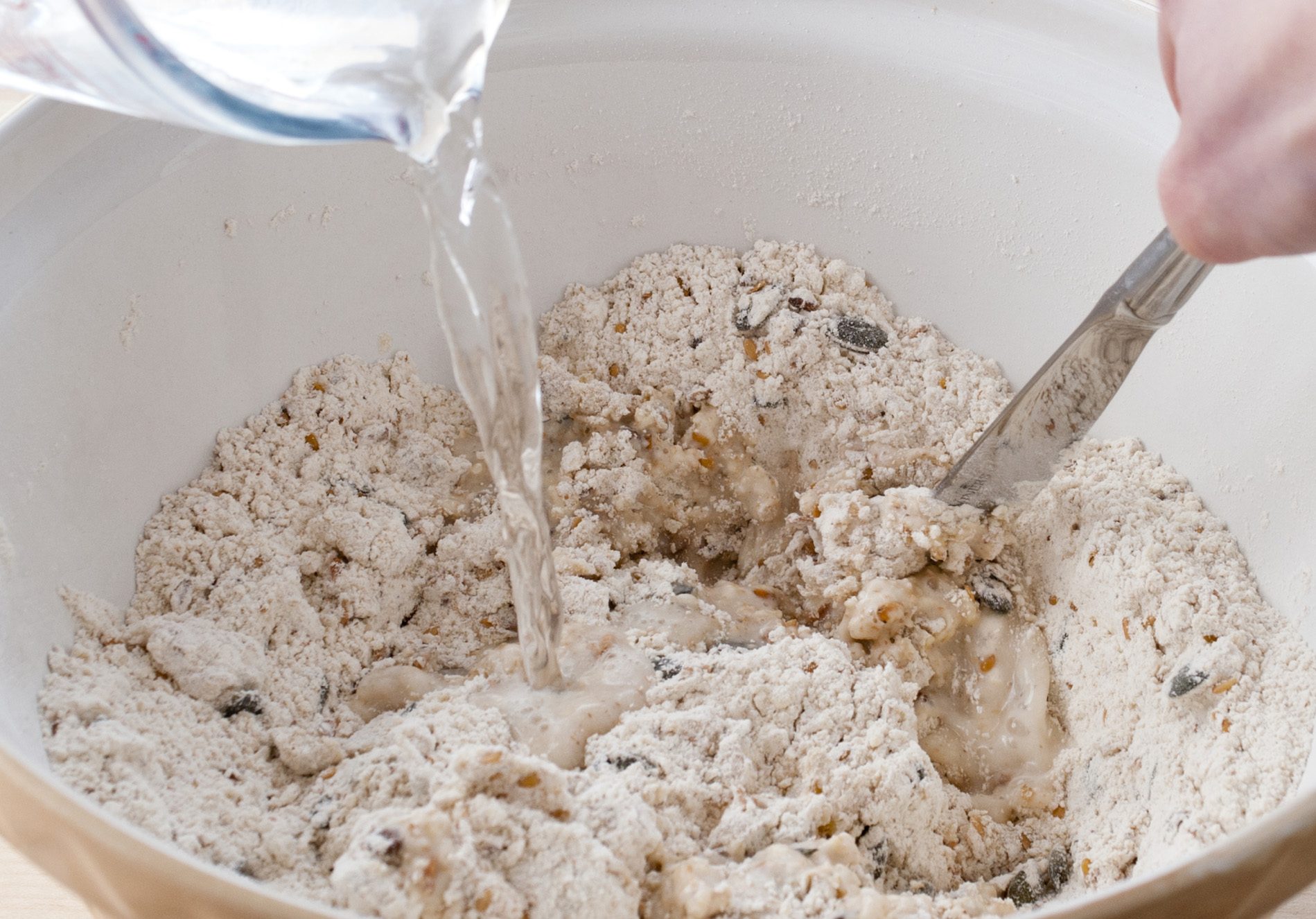
1 Add the hand-warm water to the ingredients in the bowl in a steady stream, mixing as you do so with a round-bladed knife. It’s crucial to measure the water accurately and add the full amount. If you don’t add enough initially and the dough is too dry, it’s harder to add more water later. Once all the water is added and the dough has come together, feel the texture: it should be soft, moist, and sticky.
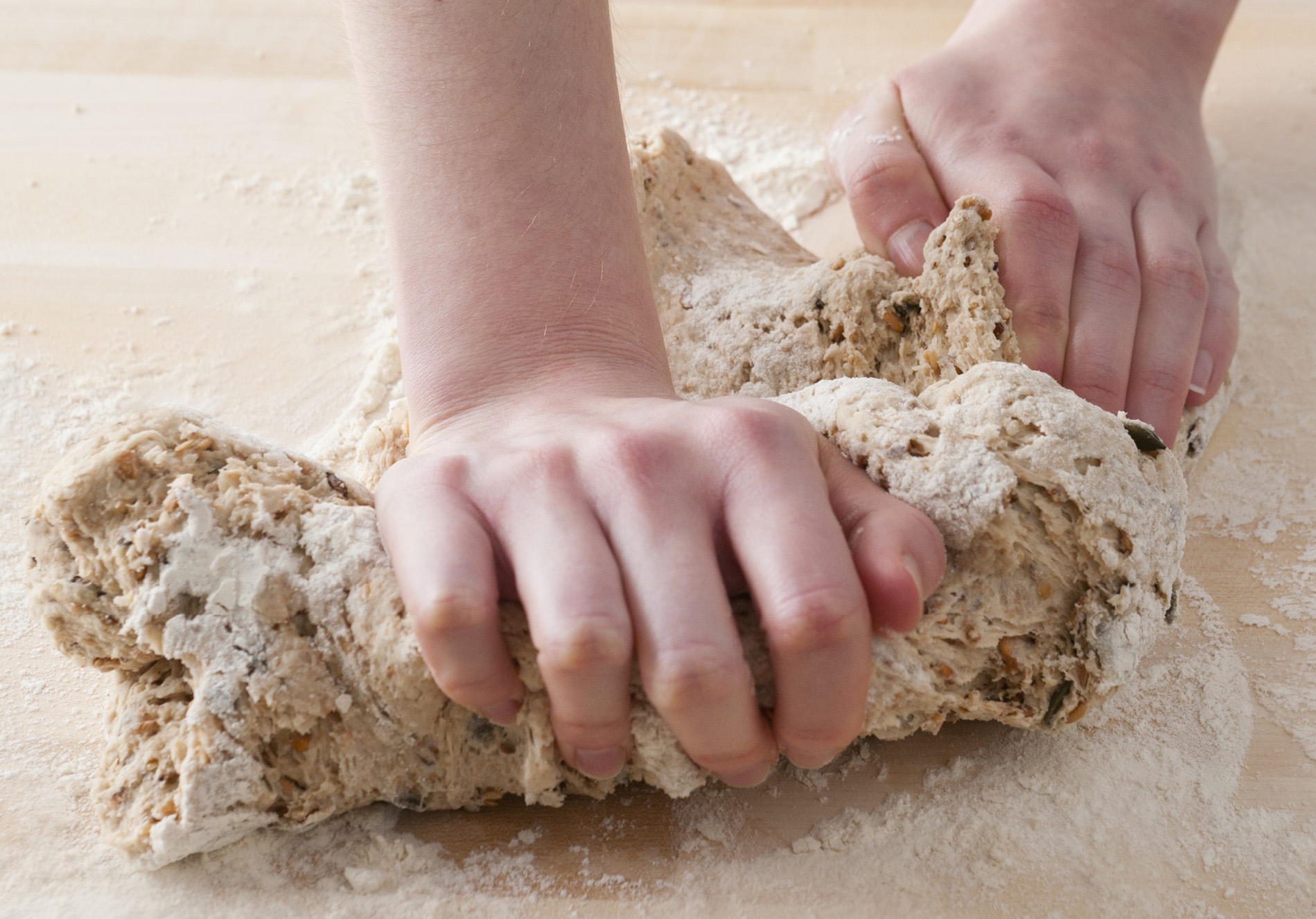
2 Gather the dough into a ball, turn it out onto a lightly floured work surface, and begin to knead. The process of kneading makes the dough more elastic, and you need to do it for 8–10 minutes at this stage for a well-textured loaf. Use the weight of your body to push down with the heel of your hand into the ball of dough, then stretch it away from your body.
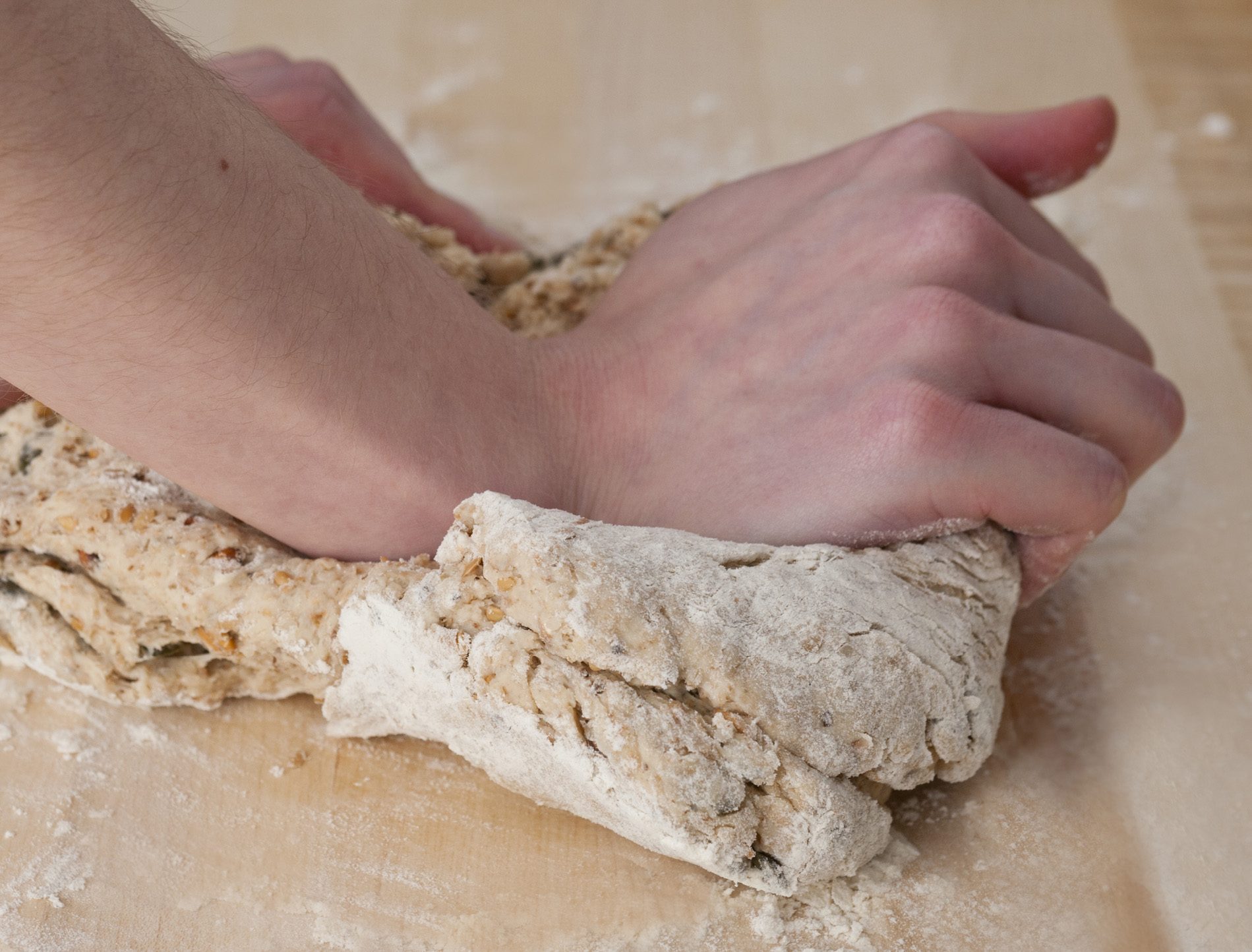
3 Bring the end of the stretched-out dough back over the top and press it down in the middle. Give a quarter turn and repeat. Get into a smooth rhythm. As you knead, the dough will start to feel less sticky but still soft and smooth. Add more flour to the work surface only if the dough is sticking to it; too much extra flour may dry out the dough. Put the dough into an oiled bowl (the oil will prevent sticking).

4 Let the dough rise in a warm place, but not too hot or it could dry out the dough. Rising is important to improve the bread’s structure and flavor. You want the dough to reach double its original size and look and feel very light and spongy. This will usually take about 11⁄2 hours, but keep checking, as it depends on the temperature of the room.
Create an evenly shaped twist
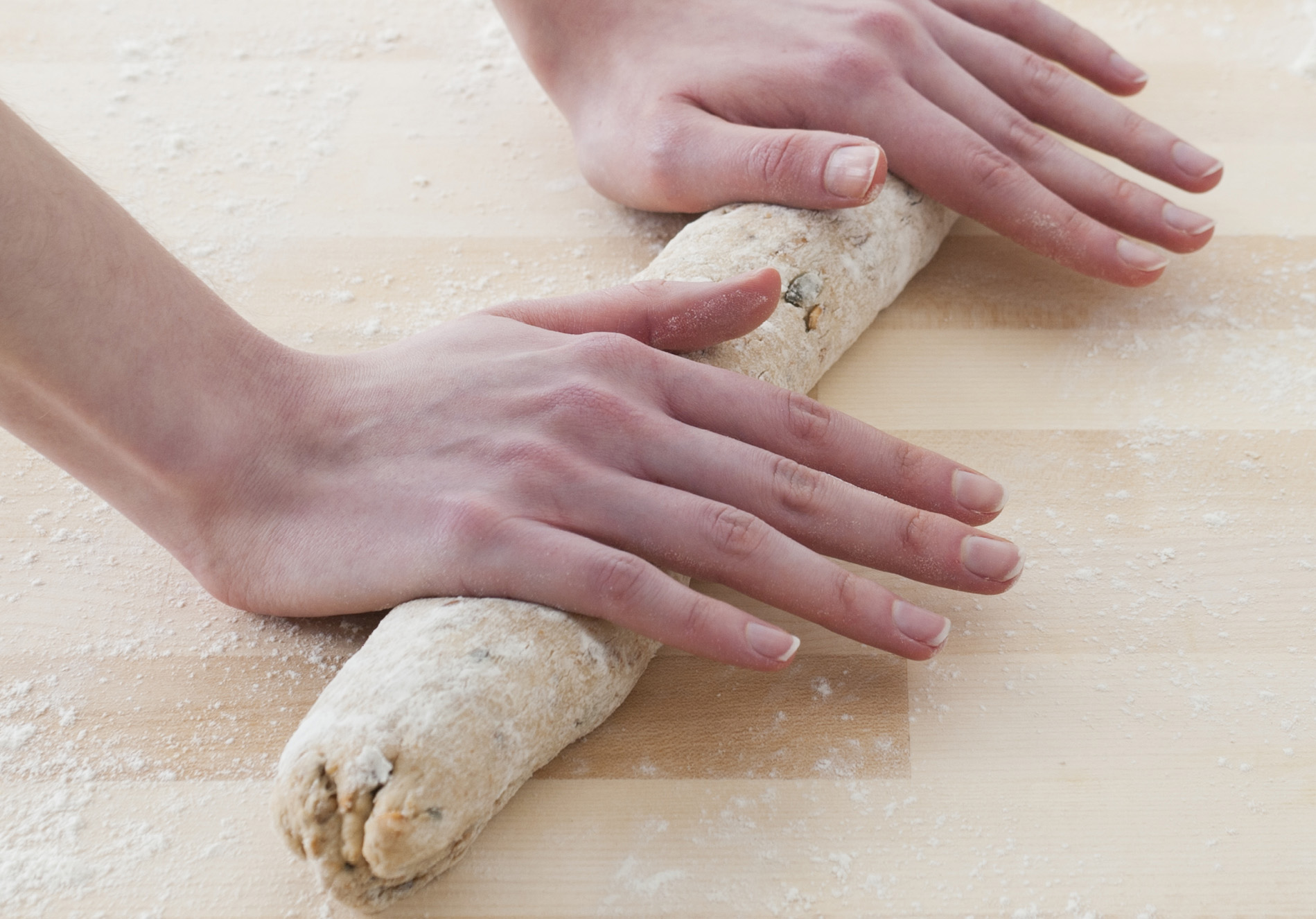
1 Weigh each half of dough to make sure they’re the same weight, to give you an evenly shaped twist. Using the palms of your hands, roll each half to make two long “ropes.” If the dough sticks and is difficult to roll, rub a tiny amount of olive oil onto the surface to help it grip.

2 Lay both dough strands to form an “X” on the work surface. Taking hold of the bottom two ends, twist them over each other 2 or 3 times to make a tight twist. Taking hold of the whole loaf from the middle, carefully turn it over and twist the other 2 ends in the same way. This will give you a plump rather than long, thin twist. Tuck both ends under very slightly and press down to seal.
Bake a crisp crust
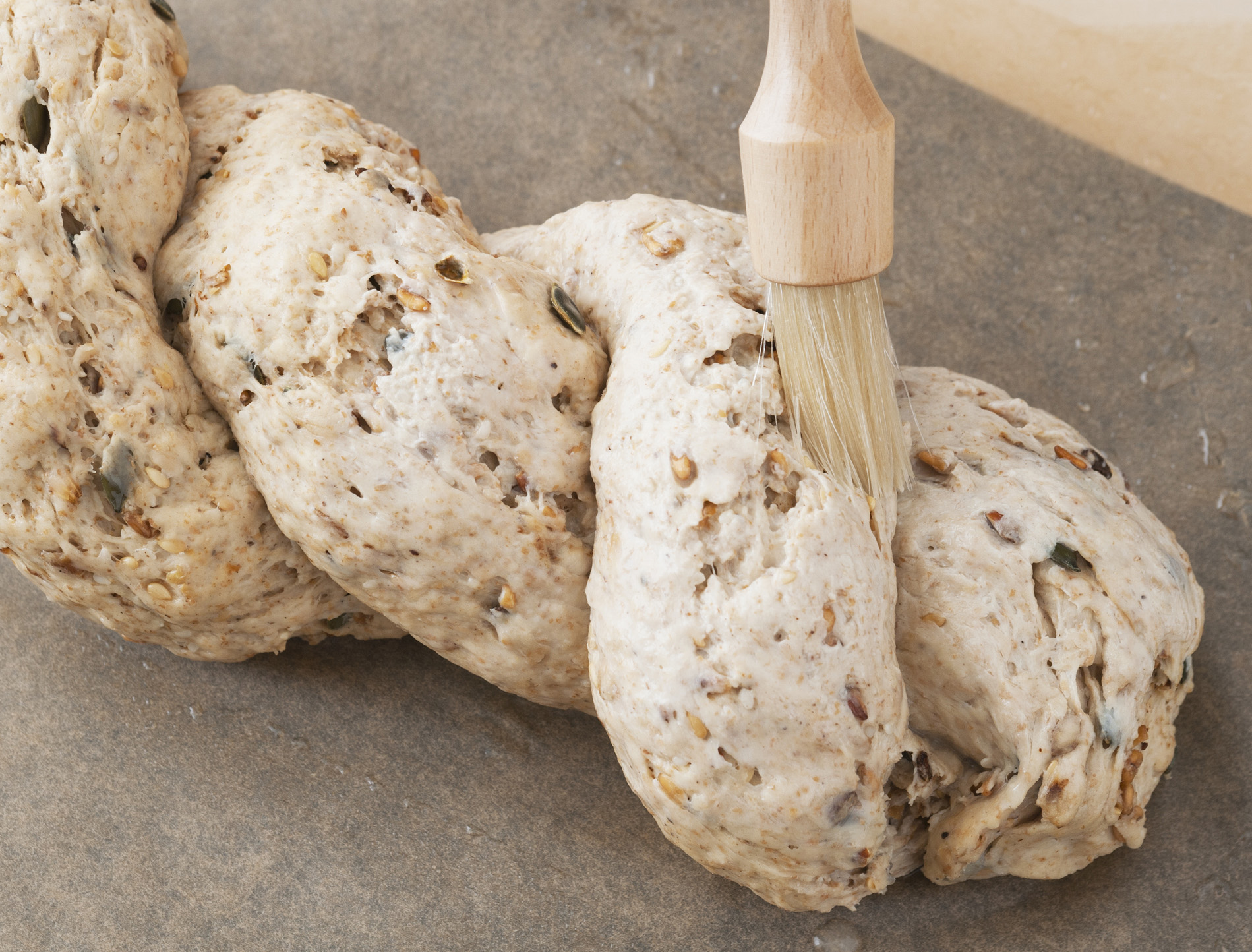
1 Before putting the twist in the oven, make sure the oven has preheated to the correct temperature (otherwise the loaf may continue to rise and the sides may split) and that the dough has risen to twice its previous size (but no more, or it may collapse). Just before baking, brush the loaf lightly with water, to create a crisp crust, and scatter over the reserved seeds, pressing them in gently.
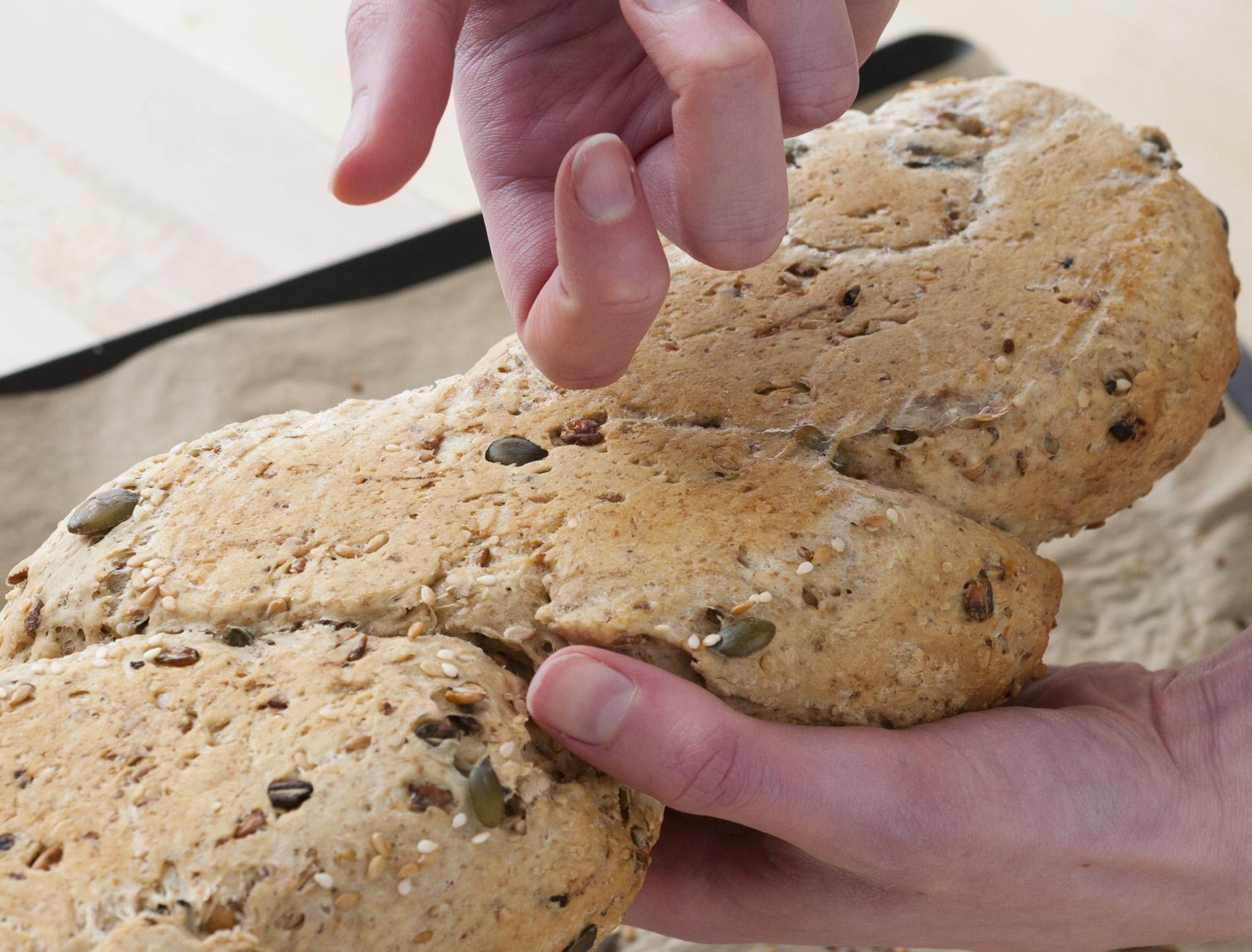
2 When the loaf is baked it should be golden brown and firm. I tap it on the base to check if it’s ready. It should have a hollow drumlike sound. If it doesn’t, return the loaf to the oven for a few more minutes.